Chuong H. Nguyen
VidConv: A modernized 2D ConvNet for Efficient Video Recognition
Jul 08, 2022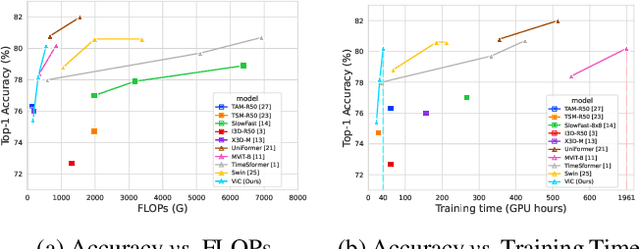


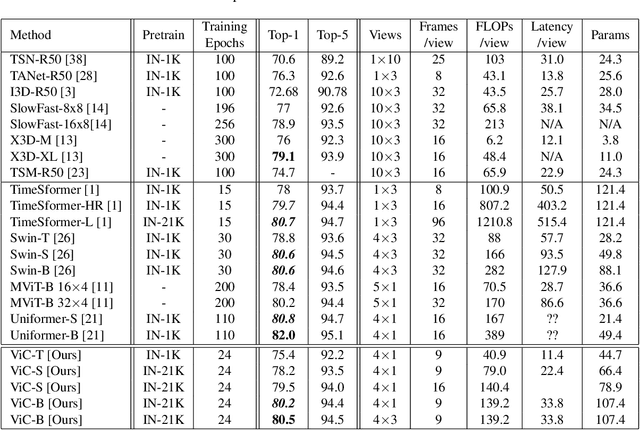
Abstract:Since being introduced in 2020, Vision Transformers (ViT) has been steadily breaking the record for many vision tasks and are often described as ``all-you-need" to replace ConvNet. Despite that, ViTs are generally computational, memory-consuming, and unfriendly for embedded devices. In addition, recent research shows that standard ConvNet if redesigned and trained appropriately can compete favorably with ViT in terms of accuracy and scalability. In this paper, we adopt the modernized structure of ConvNet to design a new backbone for action recognition. Particularly, our main target is to serve for industrial product deployment, such as FPGA boards in which only standard operations are supported. Therefore, our network simply consists of 2D convolutions, without using any 3D convolution, long-range attention plugin, or Transformer blocks. While being trained with much fewer epochs (5x-10x), our backbone surpasses the methods using (2+1)D and 3D convolution, and achieve comparable results with ViT on two benchmark datasets.
Improving Object Detection by Label Assignment Distillation
Aug 26, 2021



Abstract:Label assignment in object detection aims to assign targets, foreground or background, to sampled regions in an image. Unlike labeling for image classification, this problem is not well defined due to the object's bounding box. In this paper, we investigate the problem from a perspective of distillation, hence we call Label Assignment Distillation (LAD). Our initial motivation is very simple, we use a teacher network to generate labels for the student. This can be achieved in two ways: either using the teacher's prediction as the direct targets (soft label), or through the hard labels dynamically assigned by the teacher (LAD). Our experiments reveal that: (i) LAD is more effective than soft-label, but they are complementary. (ii) Using LAD, a smaller teacher can also improve a larger student significantly, while soft-label can't. We then introduce Co-learning LAD, in which two networks simultaneously learn from scratch and the role of teacher and student are dynamically interchanged. Using PAA-ResNet50 as a teacher, our LAD techniques can improve detectors PAA-ResNet101 and PAA-ResNeXt101 to $46 \rm AP$ and $47.5\rm AP$ on the COCO test-dev set. With a strong teacher PAA-SwinB, we improve the PAA-ResNet50 to $43.9\rm AP$ with only \1x schedule training, and PAA-ResNet101 to $47.9\rm AP$, significantly surpassing the current methods. Our source code and checkpoints will be released at https://github.com/cybercore-co-ltd/CoLAD_paper.
1st Place Solution for YouTubeVOS Challenge 2021:Video Instance Segmentation
Jul 09, 2021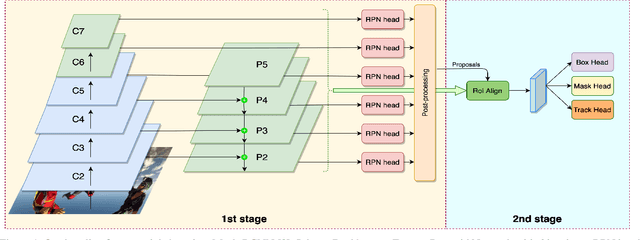

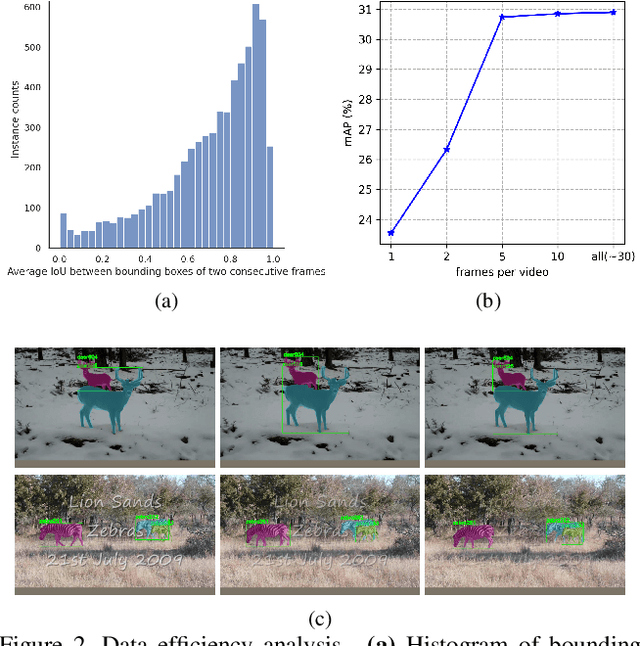

Abstract:Video Instance Segmentation (VIS) is a multi-task problem performing detection, segmentation, and tracking simultaneously. Extended from image set applications, video data additionally induces the temporal information, which, if handled appropriately, is very useful to identify and predict object motions. In this work, we design a unified model to mutually learn these tasks. Specifically, we propose two modules, named Temporally Correlated Instance Segmentation (TCIS) and Bidirectional Tracking (BiTrack), to take the benefit of the temporal correlation between the object's instance masks across adjacent frames. On the other hand, video data is often redundant due to the frame's overlap. Our analysis shows that this problem is particularly severe for the YoutubeVOS-VIS2021 data. Therefore, we propose a Multi-Source Data (MSD) training mechanism to compensate for the data deficiency. By combining these techniques with a bag of tricks, the network performance is significantly boosted compared to the baseline, and outperforms other methods by a considerable margin on the YoutubeVOS-VIS 2019 and 2021 datasets.
Single Stage Class Agnostic Common Object Detection: A Simple Baseline
Apr 25, 2021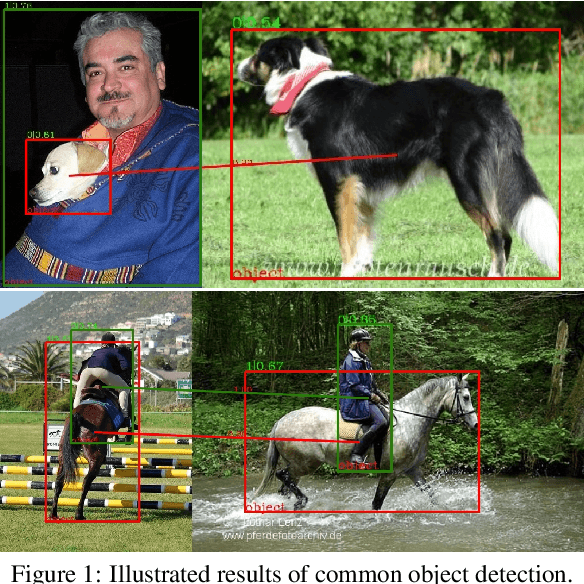

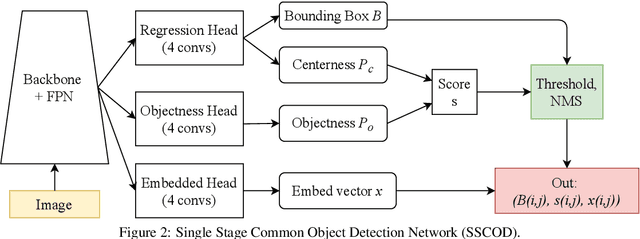

Abstract:This paper addresses the problem of common object detection, which aims to detect objects of similar categories from a set of images. Although it shares some similarities with the standard object detection and co-segmentation, common object detection, recently promoted by \cite{Jiang2019a}, has some unique advantages and challenges. First, it is designed to work on both closed-set and open-set conditions, a.k.a. known and unknown objects. Second, it must be able to match objects of the same category but not restricted to the same instance, texture, or posture. Third, it can distinguish multiple objects. In this work, we introduce the Single Stage Common Object Detection (SSCOD) to detect class-agnostic common objects from an image set. The proposed method is built upon the standard single-stage object detector. Furthermore, an embedded branch is introduced to generate the object's representation feature, and their similarity is measured by cosine distance. Experiments are conducted on PASCAL VOC 2007 and COCO 2014 datasets. While being simple and flexible, our proposed SSCOD built upon ATSSNet performs significantly better than the baseline of the standard object detection, while still be able to match objects of unknown categories. Our source code can be found at \href{https://github.com/cybercore-co-ltd/Single-Stage-Common-Object-Detection}{(URL)}
 Add to Chrome
Add to Chrome Add to Firefox
Add to Firefox Add to Edge
Add to Edge